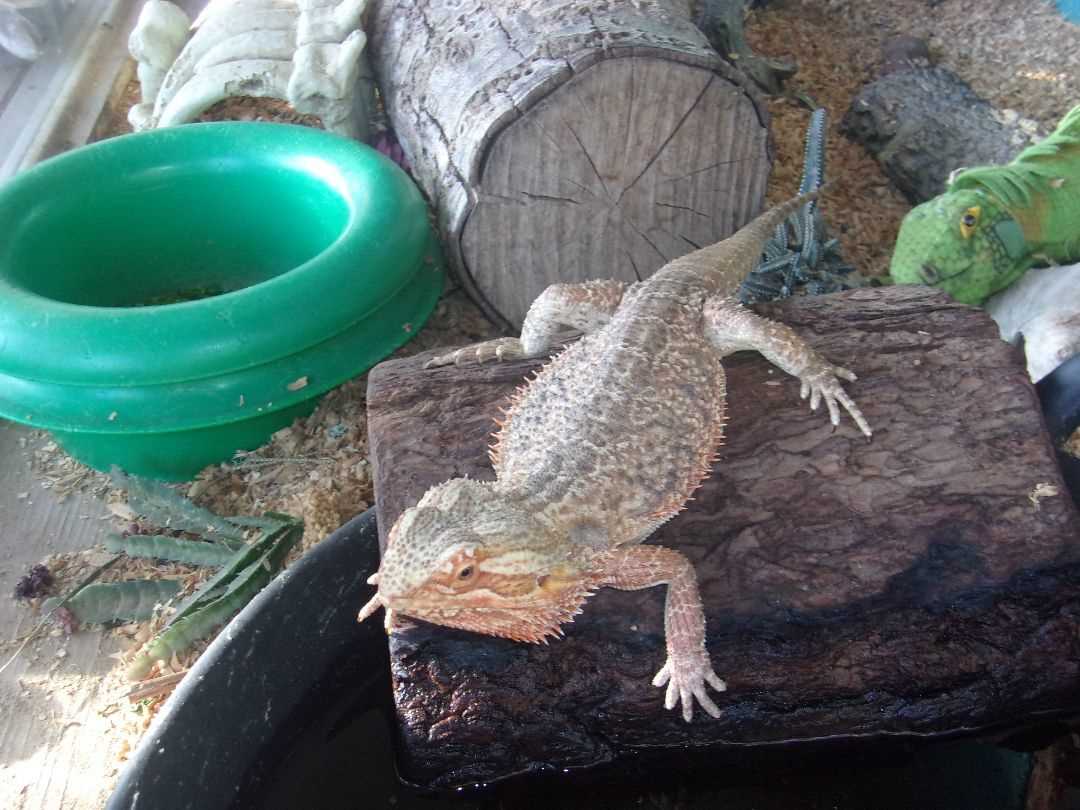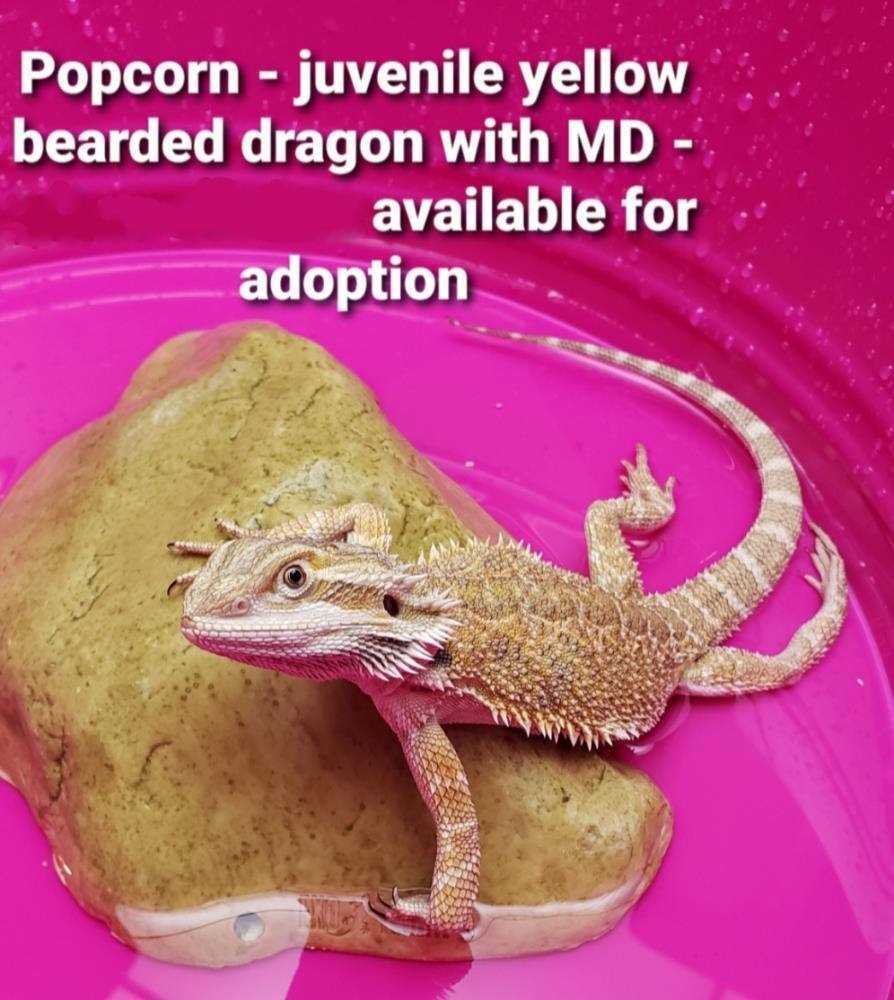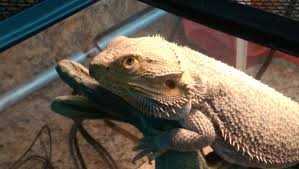
If you’re considering getting a pet, a bearded dragon might not be the first creature that comes to mind. However, these fascinating reptiles can make wonderful companions for the right owner. Before bringing home a bearded dragon, there are a few key considerations to keep in mind. Taking the time to learn about their care requirements and unique behaviors will ensure that you can provide the best possible home for your new scaly friend.
Researching Bearded Dragon Care
1. Learn about their natural habitat
Bearded dragons are native to the arid regions of Australia. Research their natural habitat, including the temperature, humidity, and types of plants and rocks they encounter in the wild. This will help you recreate a similar environment in captivity.
2. Understand their diet

Bearded dragons are omnivorous and require a balanced diet consisting of both insects and vegetables. Research the appropriate types of insects, such as crickets and mealworms, as well as vegetables, fruits, and greens that are safe for them to consume.
3. Familiarize yourself with their behavior
Bearded dragons have their unique behaviors and body language. Learn about their typical gestures, posture, and signs of stress or illness. This knowledge will help you better understand and interact with your bearded dragon.
4. Explore their lifespan and various species
5. Consider their housing requirements
Bearded dragons need spacious enclosures that mimic their natural habitat. Research the appropriate size, lighting, heating, and substrate options for their enclosure. Additionally, it is essential to provide hiding spots, basking areas, and climbing opportunities to keep them mentally stimulated.
6. Learn about common health issues
7. Find a reputable breeder or rescue organization
Research and locate reputable breeders or rescue organizations that specialize in bearded dragons. This step ensures that you are adopting a healthy and well-cared-for dragon. Ask for references, visit the facility if possible, and inquire about their breeding or rescue practices.
By thoroughly researching bearded dragon care, you will be well-prepared to provide the best possible habitat and care for your new pet. This will promote their health, happiness, and overall well-being.
Creating the perfect habitat for a bearded dragon

1. Cage or enclosure
Bearded dragons require a spacious cage or enclosure to thrive. The size of the enclosure should be at least 40 gallons for a single adult dragon, with additional space for climbing and basking.
2. Substrate
Choose a substrate that is safe and easy to clean, such as reptile carpet, tile, or paper towels. Avoid loose substrates like sand, as it can be ingested and cause impaction.
3. Lighting and heating
Provide a heat gradient in the enclosure by using a basking spot lamp and a UVB lamp. The basking spot lamp should provide a hot spot of around 100-110 degrees Fahrenheit, while the UVB lamp helps your dragon produce vitamin D3 for proper bone health.
4. Decor and hiding spots
Add branches, rocks, and other decorations to create a natural-looking environment for your bearded dragon. Provide hiding spots, like caves or logs, to give them a sense of security.
5. Temperature and humidity
Monitor and maintain the temperature and humidity levels in the enclosure. The basking area should have a higher temperature, while the cooler area should be around 80 degrees Fahrenheit. The humidity level should be around 30-40%.
6. Food and water dishes
Place food and water dishes in the enclosure, making sure they are easily accessible for your bearded dragon. Use shallow dishes to prevent drowning, and clean and refill them regularly.
7. Cleaning and maintenance
Regularly clean the enclosure to maintain cleanliness and prevent the buildup of bacteria. Remove any feces, uneaten food, and shed skin. Disinfect the enclosure periodically, ensuring the safety and health of your bearded dragon.
8. Environmental enrichment
Include various enrichments in the habitat to keep your bearded dragon mentally stimulated. This can include hiding spots, branches for climbing, and even toys they can interact with.
By creating the perfect habitat for your bearded dragon, you are providing them with a comfortable and stimulating environment that will promote their overall well-being and happiness.
Selecting a healthy bearded dragon
- Appearance: Look for a bearded dragon that has a healthy weight and a smooth, shiny skin. Avoid dragons that are unusually thin or have any visible injuries or abnormalities.
- Activity level: Observe the bearded dragon’s behavior to ensure it is active and alert. A healthy dragon will move around its enclosure, climb on branches or bask under a heat lamp.
- Clear eyes and nostrils: Check that the bearded dragon has clear, bright eyes with no discharge or swelling. The nostrils should also be clean and free from any mucus.
- Eating habits: Ask the breeder or rescue center about the dragon’s feeding habits. A healthy bearded dragon will have a good appetite and actively eat a variety of insects and vegetables.
- Temperament: Handle the bearded dragon gently to see how it reacts. While some dragons may be more docile or shy, they should not show signs of aggression or excessive fear.
It is always recommended to purchase a bearded dragon from a reputable breeder or adopt from a rescue center. They often provide the necessary information about the dragon’s health history and can offer guidance on proper care and maintenance.
Providing a Balanced and Nutritious Diet for Your Bearded Dragon
A bearded dragon’s diet should consist primarily of leafy greens and vegetables, such as kale, collard greens, and carrots. These foods provide essential vitamins and minerals that are crucial for their growth and development. Additionally, bearded dragons require protein in their diet, which can be obtained from insects like crickets, mealworms, and dubia roaches.
Creating a Balanced Diet Plan
To ensure that your bearded dragon receives a balanced diet, it is recommended to feed them a variety of vegetables, leafy greens, and insects. This will provide them with a wide range of nutrients and help prevent nutritional deficiencies.
Some examples of suitable vegetables and leafy greens for bearded dragons include mustard greens, dandelion greens, butternut squash, and bell peppers. These foods should be washed thoroughly and chopped into small, bite-sized pieces for easy consumption.
In terms of protein, bearded dragons require insects that are properly gut-loaded and dusted with calcium and vitamin supplements. This ensures that they receive the necessary nutrients and prevents metabolic bone disease, a common condition in reptiles.
Feeding Schedule and Portion Sizes
Offering a shallow water dish is also important for bearded dragons to stay hydrated. However, be careful not to provide excessively deep water bowls, as bearded dragons are not strong swimmers and can drown.
Establishing a Regular Feeding Schedule for Your Bearded Dragon
One of the most important aspects of caring for a bearded dragon is establishing a regular feeding schedule. These reptiles thrive on consistency and need a consistent supply of nutrients to stay healthy. Follow these tips to ensure that your bearded dragon receives proper nutrition:
1. Determine the appropriate feeding schedule
Depending on the age and size of your bearded dragon, the frequency of feeding may vary. Generally, hatchlings and young dragons require more frequent feedings, while adult dragons can be fed less often. Consult a reptile veterinarian or a reputable source for specific feeding guidelines.
2. Offer a variety of food
A varied diet is essential to provide all the necessary nutrients to your bearded dragon. Offer a mix of live insects, such as crickets, mealworms, and dubia roaches, as well as leafy green vegetables, fruits, and occasionally, small amounts of cooked meat. This variety will ensure a balanced diet and prevent nutritional deficiencies.
3. Dust food with calcium and vitamin supplements
Bearded dragons require calcium and vitamin supplements to maintain optimal health. Dusting their food with a reptile-specific calcium supplement and a multivitamin powder is crucial. This will help prevent metabolic bone disease and other nutritional deficiencies.
4. Feed smaller meals more frequently
For hatchlings and young bearded dragons, it’s best to feed smaller meals more frequently throughout the day. This mimics their natural feeding habits and ensures they receive enough nutrients to grow properly. As your dragon grows, you can gradually decrease the frequency and increase the portion size of their meals.
5. Use appropriate feeding techniques
By establishing a regular feeding schedule and providing a varied and nutritious diet, you can ensure the health and well-being of your bearded dragon. Remember to monitor their weight and consult a reptile veterinarian if you have any concerns about their feeding habits or overall health. With proper care, your bearded dragon will thrive and become a beloved member of your family.
Maintaining Proper Temperature and Humidity for Your Bearded Dragon
When adopting a bearded dragon as a pet, it is crucial to create and maintain the appropriate temperature and humidity levels in their habitat. Bearded dragons are native to hot and dry regions, so providing them with the right environment will help ensure their health and well-being.
Temperature Requirements
Bearded dragons require a temperature gradient in their enclosure, which means providing a warmer spot for them to bask and a cooler spot to retreat to. The basking spot should be maintained at a temperature between 95-105 degrees Fahrenheit (35-40 degrees Celsius). This can be achieved by using a heat lamp or ceramic heat emitter. The cooler side of the enclosure should be around 75-85 degrees Fahrenheit (24-29 degrees Celsius).
It is essential to monitor the temperature consistently using a reliable thermometer to ensure it remains within the appropriate range. Temperature fluctuations can stress or even harm your bearded dragon.
Humidity Requirements
Bearded dragons require a relatively low humidity level, usually ranging from 30% to 40%. Higher humidity levels can lead to respiratory problems. To maintain the proper humidity, you can mist your bearded dragon’s enclosure with water using a spray bottle. Additionally, providing a water dish in the enclosure can help increase humidity slightly.
Using a Hygrometer
A hygrometer is a useful tool for monitoring the humidity levels in your bearded dragon’s habitat. It is recommended to place the hygrometer in the middle of the enclosure, away from direct heat or humidity sources, to get an accurate reading.
Proper Lighting
Conclusion

Handling and Socializing Your Bearded Dragon
Here are some tips for handling and socializing your bearded dragon:
- Start with short handling sessions: When you first bring your bearded dragon home, allow them to settle into their new environment before attempting to handle them. Once they have had time to adjust, start with short handling sessions of about 5-10 minutes, gradually increasing the duration over time.
- Approach from the side: When picking up your bearded dragon, approach them from the side rather than from above. This helps them feel less threatened and more at ease. Slowly and gently scoop them up, supporting their body with both hands.
- Be mindful of their tail: Bearded dragons have delicate tails that can easily be injured if mishandled. Avoid pulling or tugging on their tail and be careful not to drop them, as this can lead to tail injuries.
- Provide a comfortable handhold: Bearded dragons appreciate having something to grip onto while being handled. Place your hand or forearm against their belly to provide them with a secure and comfortable handhold.
- Offer treats and positive reinforcement: Use treats, such as small pieces of their favorite fruit or vegetable, as a reward during handling sessions. This helps to associate handling with positive experiences and can further strengthen the bond between you and your bearded dragon.
- Introduce them to new environments: Gradually introduce your bearded dragon to new environments and experiences to help them become more comfortable and well-socialized. This can include supervised outdoor time or supervised interactions with other pets.
- Avoid overhandling: While handling is important for socialization, it is crucial to avoid overhandling your bearded dragon. Overhandling can cause stress and discomfort to them, so make sure to give them adequate time to rest and relax in their enclosure.
- Monitor their body language: Pay attention to your bearded dragon’s body language during handling sessions. If they display signs of stress or discomfort, such as hissing, puffing up their beard, or trying to escape, it may be best to end the session and give them some time alone.
Recognizing signs of illness and seeking veterinary care for your bearded dragon
- Loss of appetite: If your bearded dragon suddenly stops eating or shows a significant decrease in appetite, it could be a sign of illness.
- Lethargy: If your bearded dragon is unusually inactive and spends most of its time sleeping or resting, it may be a sign that something is wrong.
- Changes in appearance: Any changes in the appearance of your bearded dragon, such as weight loss, dull skin, or swelling, should be taken seriously.
- Respiratory issues: Wheezing, labored breathing, or discharge from the nose or mouth can indicate a respiratory infection.
- Diarrhea or abnormal droppings: If your bearded dragon’s droppings are loose, watery, or discolored, it may be a sign of digestive problems or infection.
- Behavioral changes: Aggression, excessive scratching, or other unusual behaviors can also be indicators of illness.
When seeking veterinary care for your bearded dragon, look for a veterinarian with experience in reptile medicine. They will be familiar with the unique needs of these animals and will have the necessary tools and knowledge to provide appropriate care. Regular check-ups are also recommended to catch any potential health issues early and prevent them from becoming serious.
Remember, being proactive and attentive to your bearded dragon’s health is crucial for their well-being. By recognizing signs of illness and seeking veterinary care, you can help ensure a long and healthy life for your beloved pet.
Cleaning and maintaining the enclosure
Proper cleaning and maintenance of the enclosure is crucial for the health and well-being of your bearded dragon. Regular cleaning helps to prevent the buildup of bacteria and parasites, ensuring a clean and safe environment for your pet.
Here are some tips for effectively cleaning and maintaining your bearded dragon’s enclosure:
| 1. Remove waste daily: | Remove any feces and uneaten food from the enclosure on a daily basis. This helps to prevent the spread of bacteria and keeps the enclosure clean. |
| 2. Clean the enclosure weekly: | Once a week, remove your bearded dragon from the enclosure and thoroughly clean the entire habitat. Use a reptile-safe disinfectant to clean the surfaces, including branches, rocks, and other decorations. Rinse well to remove any residue. |
| 3. Replace substrate: | If you are using substrate in the enclosure, such as newspaper or reptile carpet, replace it regularly to maintain cleanliness. Avoid using loose substrate, as it can pose a risk of impaction if ingested. |
| 4. Check and clean the water dish: | Regularly check the water dish and clean it to ensure it is free of debris and bacteria. Provide fresh, clean water daily. |
| 5. Monitor humidity and temperature: | Regularly monitor the humidity and temperature levels in the enclosure to ensure they are within the appropriate range for your bearded dragon. Adjust as needed. |
| 6. Inspect for signs of illness: | While cleaning, take the time to inspect your bearded dragon for any signs of illness or injury. Look for changes in behavior, appetite, or appearance, and seek veterinary care if needed. |
By following these cleaning and maintenance tips, you can ensure that your bearded dragon’s enclosure remains clean and hygienic, providing a healthy and comfortable living space for your pet. Remember to always prioritize the well-being of your bearded dragon and provide a clean environment for them to thrive in.
Basking is a behavior that all bearded dragons engage in. They require ample heat to properly digest their food, so they will spend a significant amount of time basking under a heat lamp or in a designated basking spot. It is essential to provide the proper temperature gradient in their enclosure to ensure that they can regulate their body temperature effectively.
Bearded dragons are also known for their ability to change their color. They can darken or lighten their body coloration in response to environmental factors such as temperature, light, or mood. This behavior is fascinating to observe and can provide valuable insight into their overall well-being.
Tips for Training and Enriching Your Bearded Dragon’s Environment
1. Provide a Variety of Hiding Spots
2. Use Different Substrates
Bearded dragons enjoy different textures under their feet, so it’s a good idea to use a variety of substrates in their enclosure. You can use reptile carpet, paper towels, or even sand (as long as it is a calcium-based sand) to provide different sensory experiences for your bearded dragon.
3. Offer Toys and Enrichment Items
Just like any other pet, bearded dragons enjoy playing with toys and enrichment items. You can provide them with items such as balls, tunnels, and puzzle toys that are suitable for their size and species. These toys can help keep your bearded dragon entertained and mentally stimulated.
4. Train Your Bearded Dragon with Positive Reinforcement
Bearded dragons are highly intelligent and can be trained to perform simple tasks and tricks. You can use positive reinforcement techniques, such as offering treats or praise, to reward your bearded dragon for desired behaviors. This not only helps to strengthen the bond between you and your pet but also provides mental stimulation for them.
5. Create a Routine
Bearded dragons thrive on routine, and having a consistent daily routine can help reduce stress and provide a sense of security for your pet. Establish a routine for feeding, handling, and other activities, and try to stick to it as much as possible. This can help your bearded dragon feel safe and comfortable in their environment.
6. Provide Regular Out-of-Cage Time
Bearded dragons need regular out-of-cage time to explore their surroundings and stretch their legs. Set up a safe and supervised area outside of the enclosure where your bearded dragon can roam freely. This will provide them with additional mental and physical stimulation.
By following these tips and regularly training and enriching your bearded dragon’s environment, you can provide them with a happy and fulfilling life as a pet. Remember to always monitor their behavior and adjust the environment as needed to ensure their well-being.
Building a Strong Bond with Your Bearded Dragon
1. Spend Quality Time Together
One of the best ways to build a bond with your bearded dragon is by spending quality time together. Set aside dedicated time each day to interact and play with your pet. This can include activities such as hand-feeding them, gently stroking their back, or simply sitting near their enclosure while reading a book or watching TV.
2. Handle Them Gently
Handling your bearded dragon with care is crucial for building trust. Start by gently introducing your hand into their enclosure and allowing them to approach you at their own pace. Once they feel comfortable, you can slowly and gently pick them up. Support their body with both hands and avoid any sudden movements that may startle them. This will help them associate your touch with positive experiences.
3. Offer Enrichment Activities
Bearded dragons are intelligent creatures that require mental stimulation. Providing them with enrichment activities not only keeps them mentally engaged but also helps build a bond. Some enrichment ideas include hiding treats around their enclosure for them to search for, introducing new toys or objects to explore, or creating an obstacle course for them to navigate.
4. Talk to Them
Bearded dragons are sensitive to sound and can become accustomed to familiar voices. Talk to your bearded dragon in a calm and soothing voice, using their name. This regular communication will help them recognize and bond with you.
5. Use Positive Reinforcement
Positive reinforcement is an effective way to build trust and strengthen the bond with your bearded dragon. Reward them with small treats or praise when they exhibit desired behaviors, such as coming when called or following commands. This will encourage them to repeat these behaviors and reinforce the bond between you.
6. Respect Their Boundaries
By following these tips and being patient and consistent, you can build a strong bond with your bearded dragon. This bond will not only enhance your own enjoyment and satisfaction as a pet owner but also contribute to the overall well-being and happiness of your bearded dragon.

I’m Lena Adams—a product of an unconventional upbringing in the African wilderness. My father, a daring explorer of African wildlife, sparked my fascination with reptiles, a passion that intertwined with the tragic loss of my mother during an expedition, leaving an indelible mark on my life. Driven to understand the creatures that captivated my parents, I embarked on my journey, sharing insights about reptiles, frogs, and lizards on my website. Through my explorations and conservation efforts, I honour my family’s legacy while seeking connections—to the creatures, nature, and the mother whose presence I yearn to understand.
